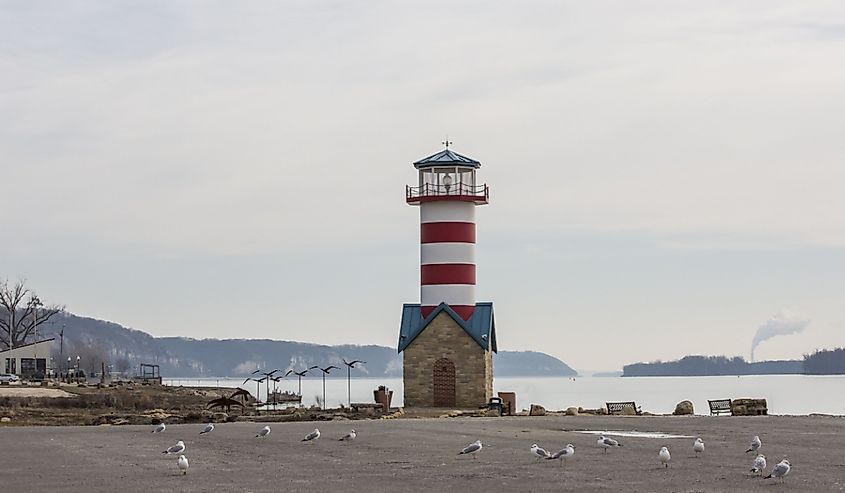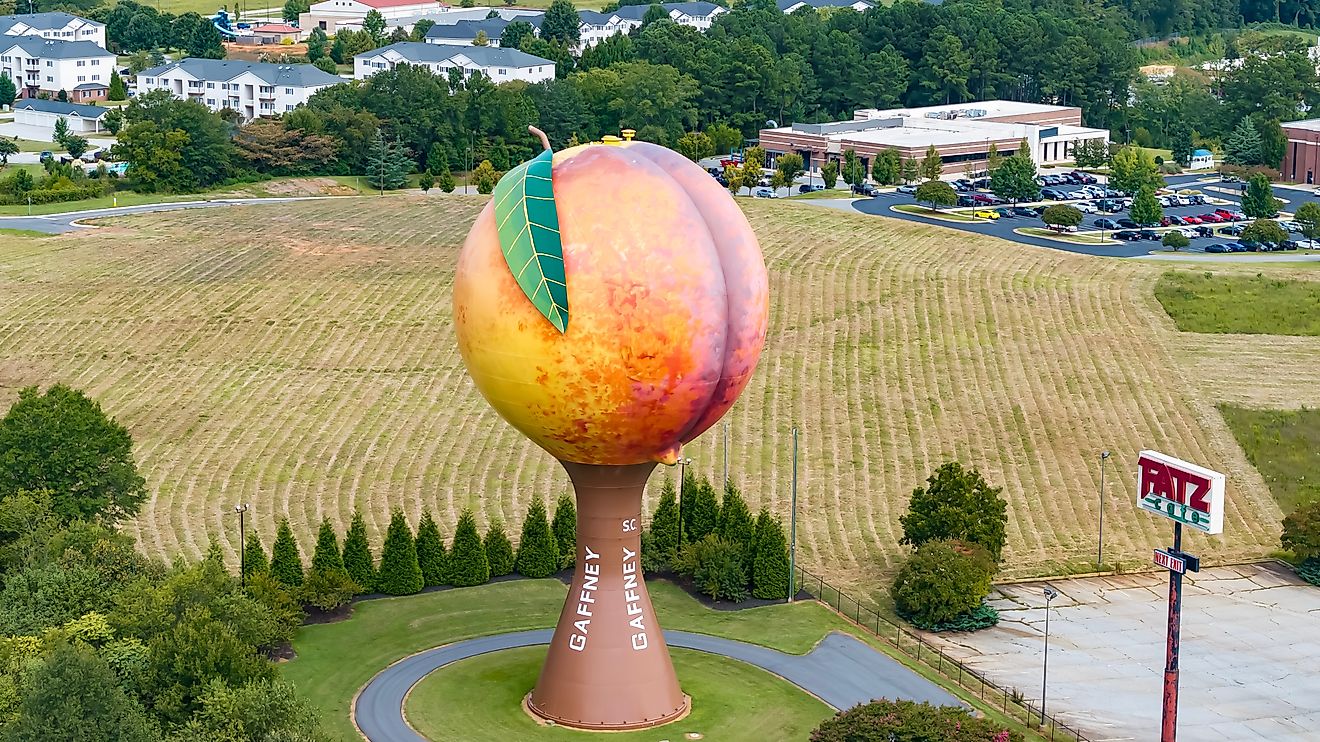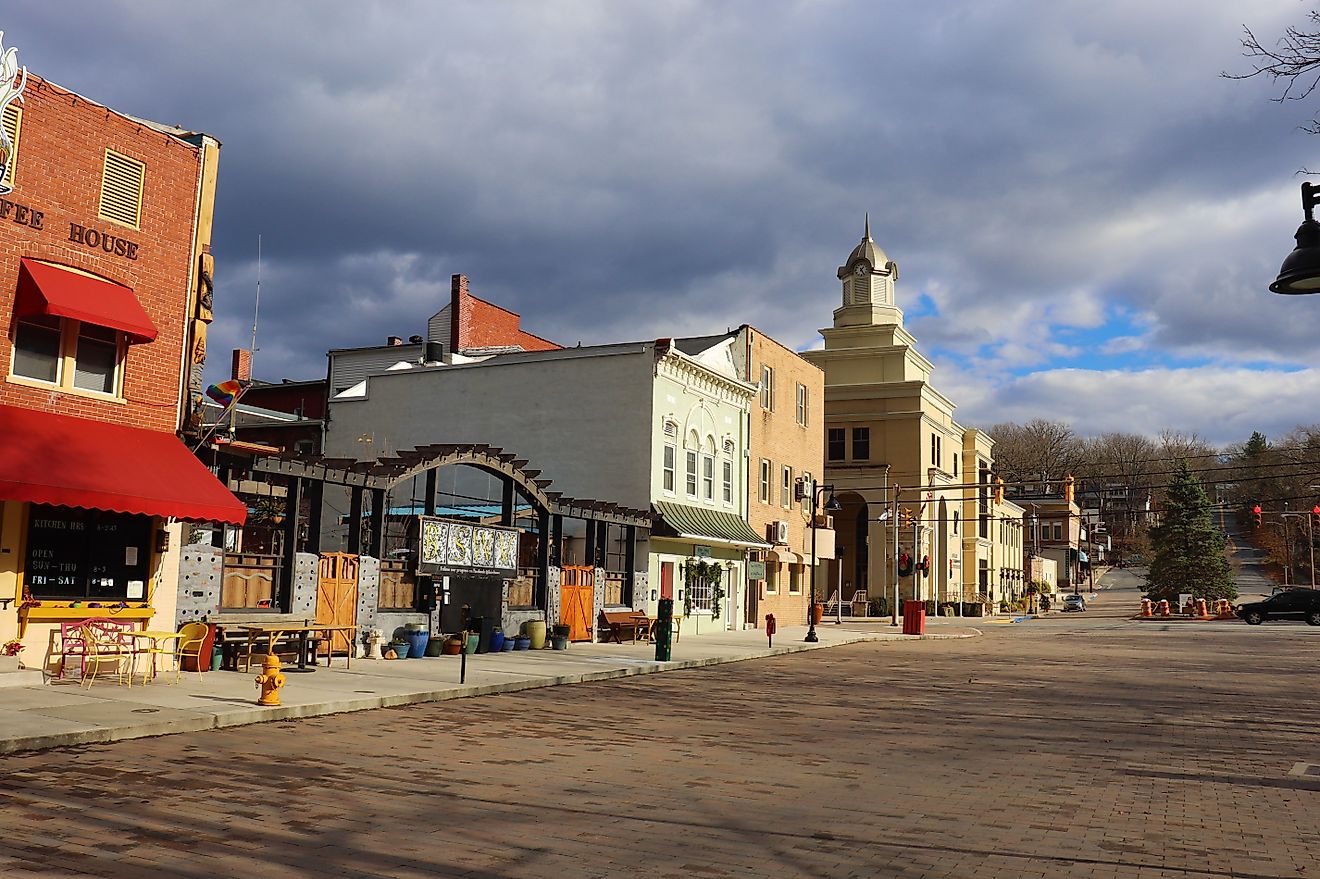
7 Most Underrated Cities in Illinois
Illinois is the Prairie State and the Land of Lincoln, with deeply-rich history and wide-open natural areas. Chicago, the world-renowned state's most populated city, is a popular and bustling metropolis that many tourists flock to, but the rest of the rural state holds a laid-back beauty of its own. There are many underrated cities that glow with the true essence of Illinois traditions while offering fewer crowds and a plethora of stunning attractions.
Champaign

Champaign is a vibrant cityscape of nearly 90,500 in east-central Illinois about 135 miles southwest of Chicago. Together with Urbana immediately east, the cities are often referred to as Champaign-Urbana. Urbana shares the main campus of the University of Illinois (founded in 1867), with many students visiting Champaign. The city roots back to 1854 as a depot along the newly-laid Illinois Central Railroad tracks two miles west of Urbana and incorporated the following year. Successful citizen petitions to remain a separate entity led to a settlement, first known as West Urbana, and renamed in 1860 for the county (incorporated in 1833).
With the university as the chief economic asset, there is also prominent agriculture around the area, primarily corn and soybeans. Additional industries include food processing, distribution, technology, office supplies, and the manufacturing of plastics and ceramics. Champaign today is a vibrant city with must-visit attractions, including museums of natural history, art, and science. It is bountiful in nature, with the 900-acre Lake of the Woods Forest Preserve only ten miles to the northwest. The city is home to a galore of family-friendly pastimes, along with many beautiful parks to explore. The lively downtown scene boasts great shopping opportunities and varied cuisine options.
Evanston

The historic city in Cook County of northeastern Illinois spreads scenically along the banks of the immense Lake Michigan, 15 miles north of downtown Chicago. With 79,200 residents, it stores rich history and landmarks. The residence of Frances Willard, an advocate of the Woman's Christian Temperance Union (WCTU) in 1865, is a national historic landmark. There is the Evanston Historical Society in the former home to the vice president of the US from 1925 to 1929, Charles G. Dawes, while The Cradle is a nonsectarian adoption home from 1923. Visitors also enjoy the scenic Grosse Point Lighthouse built in 1873 with a museum and nature center.
Evanston was early-inhabited by Illinois and later the Potawatomi Indians, with the first French explorers in the area during the 17th century, who called it the Grosse Pointe. Between 1795 and 1833, the Potawatomi ceded their lands to the US, and major settlement of the city began in 1836 with a jewelry dealer from New York, and Major Edward H. Mulford's tavern. From 1850 until 1957, residents called the town Ridgeville. In 1953 a Chicago group of businessmen bought property along the lakeshore for Northwestern University, around which Evanston expanded. Named after John Evans, one of Northwestern’s founders, the city annexed adjoining North Evanston in 1874 and South Evanston in 1892.
The city today is the region's prominent educational and religious center with many relevant institutions. The massive Technological Institute building of Northwestern University is among the world’s biggest academic structures. The vibrant city is often overlooked for the nearby state capital while boasting an on-par scene of fantastic restaurants with cuisines from around the world, and great shopping. Moreover, its beach offers one of the best views of Lake Michigan and comes lined with more attractions. The residents and tourist culture fans enjoy the symphony orchestra and several performing theatre groups. Tourists come for the popular Fountain Square Arts Festival, and the city is overrun at the end of December for the state's largest New Year's Eve festival, First Night Evanston.
Frankfort

The charming and underrated city of around 21,000 residents boasts Downtown Frankfort's Victorian-era treasures. Its most-notable historic find is the tall symbolic Grainery tower. Standing erect as the only remains of the building that suffered a fire in 1985, the tower is the city's commemoration of perseverance crowning the historic center. The prideful Frankfort has meticulously preserved its history which bestows an 1890s vibe and small-town charm.
The gorgeous downtown main street right off of the Old Plank Trail has many attractions. The central green square hosts huge summertime farmers' markets with local businesses selling home-grown goods and delicious eats. There is also the popular Creamery right off the bike trail, an adorable shop with renowned ice cream treats that are tasty no matter the weather outside.
Grafton

Grafton, the oldest city in Jersey County, is primarily underrated for its optimal locale near the confluence of the Illinois and Mississippi Rivers. Founded in 1832, it is the "The Winter Home of the Bald Eagle," speaking volumes to bird-watchers and nature enthusiasts with vast landscapes surrounding the fun city. Grafton boasts a galore of unique activities such as a floating winery in the marina. There are pontoon boat rentals for self-guided exploration along the meandering rivers, as well as scenic bike path routes such as the Sam Vadalabene Bike Trail parallel to the Mississippi. The paved Great River Road is best for scenic drives with the car roof open and music blaring.
The drive to Grafton alone is one of the Midwest's most scenic. The river city offers a refreshing change in pace and scenery from the mundane metropolis. It is full of scenically-set restaurants, and bars, as well as water parks, zip lines, and the renowned river harbor with delectable dining options. The Piece of Quiche is a perfect spot for brunch, followed by a day in the outdoors. The nearby Pere Marquette State Park, the largest in Illinois, is an 8,000-acre galore of hiking trails through the woods. There are also beautiful wineries around with local Illinois wines to taste and buy a bottle for a picnic to observe majestic bald eagles overhead.
Naperville

The city in northeastern Illinois spreads scenically along the West Branch DuPage River, only 30 miles west of Chicago. Naperville is the county's oldest founded in 1831 and named after Captain Joseph Naper. Along with his brother John, they erected mills, a school, and a trading house, with the city becoming the county seat in 1839. Naperville continued expanding as a crossroads from Chicago to Galena and Vandalia, while the Chicago, Burlington, and Quincy Railroad (1864) stimulated the development into a fast-growing residential suburb of Chicago. Naperville grew about 10-fold from 1960 to the end of the 20th century, to a hub for high-technology industries, research, and corporate headquarters. It is the home of North Central College relocated on-site in 1870.
The large city with a population of almost 152,000 is booming and expanding. The quaint downtown area bestows a charming feel, loaded with a wide selection of quality shops and boutiques. The residents enjoy the wonderful Riverwalk through various daily pursuits such as scenic sunset strolls. It is also a recreational galore for relaxing pastimes along the Du Page River, with scenic fountains, covered bridges, and an amphitheater. Outdoor enthusiasts can head to one of the many parks with hiking and biking trails. Other popular local attractions include the Naper Settlement, a 13-acre outdoor living-history museum housing 19th-century life memorabilia, and the DuPage Children’s Museum. The 72-bell Millennium Carillon is among the world’s largest instruments, spanning a full six octaves with one of the bells weighing six tons.
Peoria

The major port city in the Land of Lincoln on the Illinois River is home to 112,500 residents living their best life within a vastly-diversified economy. Prosperity in Peoria started early from a trading center for a large agricultural area, shipping products such as corn, soybeans, and livestock. Its traditional manufacturing industries remain prominent with excavating, farming, and lawn-care equipment, as well as metal products, building materials, and chemicals. Peoria was once home to many distilleries and breweries until the 1980s. There are various research and educational institutions such as the US Department of Agriculture’s National Center for Agricultural Utilization Research, and the Illinois Central College (1967) in East Peoria.
Many know the city by an old vaudeville line, "Will it play in Peoria?" hinting at its staple "heartland" values within the entire US. The Civic Center opened in 1982 is the heart of cultural and recreational pursuits with music concerts, exhibitions, and other events. The active culture fans enjoy Lakeview Park, home to the Lakeview Museum of Arts and Sciences, Peoria Players Theatre, a swimming pool, and an ice-skating rink. The unjustly-underrated city has an opera and ballet, symphony, theatre, a zoo, as well as the Jubilee College State Park and Historic Site about 17 miles to the northwest.
The notable Riverfront was a gambling locale in the 1980s and 1990s that stimulated the local tourist trade. For more outdoor ventures, the Wildlife Prairie State Park is the natural habitat of the native Illinois animals, such as bison, cougars, and bears, along with some state fish and wildlife areas southwest of the city. The great cityscape is only a couple of hours away from Chicago, with a completely opposite pace, vibe, and nature, such as refreshing strolls at the Luthy Botanical Garden. For a more cultural fix, the Peoria Riverfront Museum describes past to present-day living in the city, while its sculpture garden, a pure joy to wander, is a must in Peoria.
Schaumburg

Schaumburg is wildly overlooked and home to many attractions such as the LEGOLAND Discovery Center and Ned Brown Forest Preserve. The family-friendly city in close proximity to Chicago is a shopping destination with a large mall housing every store imaginable. This northwestern suburban city has a unique back-story of growing over a marshy area with first settlers from eastern states in the mid-1830s, such as Yankees from Kent of Oswego County in New York. The Germans arrived primarily from Schaumburg-Lippe, between Dortmund and Hannover, to settle along the present-day Irving Park and local highways as farmers.
They organized a German Lutheran congregation and built their first church in 1847. Schaumburg grew slowly in the fertile, albeit swampy area with no railroad depot to aid in communication with Chicago. With a population of 1,000 by the end of the century, Schaumburg boasted three cheese factories but expanded only upon derangement from its isolation by the Northwest Toll road in 1956. The farmers immersed themselves in industrial, commercial, and residential development, while the population of 53,305 in 1980 grew to 80,000 today. The German legacy remains in a large number of streets spreading from the old center, and heritage lives on in road names such as Biesterfield.
These lesser-known cities with a homey feel will immerse you in lively downtown areas and vibrant architecture. With easy access from Chicago via scenic drives and the boundless nature of meandering rivers and state parks spliced by trails right at the doorstep, there is much to discover on a refreshing getaway into unexplored territory.











